ALP 20.0%
Incumbent MP
Frank McGuire, since 2011.
Geography
Northern Melbourne. Broadmeadows is mostly contained within Hume council, along with a small part of Moreland council, covering the suburbs of Broadmeadows, Campbellfield, Coolaroo, Dallas, Fawkner, Jacana, Meadow Heights and Somerton and parts of Glenroy, Roxburgh Park and Westmeadows.
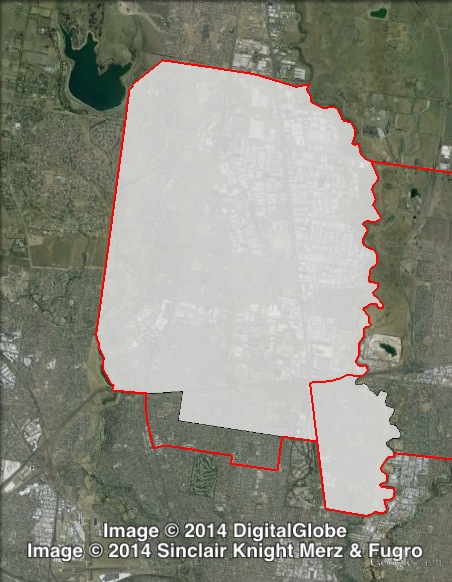
Redistribution
Broadmeadows underwent some changes on its southern boundary, gaining Fawkner from Thomastown and losing Hadfield and parts of Glenroy to Pascoe Vale. These changes cut the ALP margin from 21% to 20%.
History
Broadmeadows was first created at the 1955 election, and has been held by the ALP continuously since 1962.
The seat was first won in 1955 by the Liberal Party’s Harry Kane. He held the seat until his death in 1962.
The ensuing by-election was won by the ALP’s John Wilton. Wilton held the seat from 1962 until his retirement at the 1985 election.
In 1985, sitting Member for Glenroy Jack Culpin moved to Broadmeadows after his previous district was abolished. Culpin held the seat for one term.
In 1988, Jim Kennan moved from the Thomastown Legislative Council seat to Broadmeadows. He became Deputy Premier in 1990 and became Leader of the Opposition following the ALP’s election defeat in 1992.
Kennan resigned from Parliament in June 1993. The ensuing by-election was won by John Brumby, who had been Legislative Council member for Doutta Galla since another by-election in March the same year.
Brumby had been elected Leader of the Victorian ALP following Kennan’s resignation before his move to the Legislative Assembly. Brumby served as Labor leader until March 1999, when he stepped down in favour of Steve Bracks.
Brumby served as a senior minister in the Bracks government, serving as Assistant Treasurer (with Bracks himself as Treasurer) until he was appointed Treasurer in 2000. In 2007, Brumby was elected Labor leader and Premier following Steve Bracks’ retirement.
John Brumby led the ALP to the 2010 election, when the party narrowly lost power. Brumby resigned shortly after the election, and the 2011 by-election was won by Labor candidate Frank McGuire.
Candidates
- Wayne Knight (Family First)
- Frank McGuire (Labor)
- Jaime de Loma-Osorio Ricon (Greens)
- Mohamed Hassan (Voice for the West)
- Evren Onder (Liberal)
- John Rinaldi (Independent)
Assessment
Broadmeadows is a very safe Labor seat.
2010 election result
| Candidate | Party | Votes | % | Swing | Redist |
| John Brumby | Labor | 19,125 | 62.29 | -5.35 | 60.64 |
| Samli Ozturk | Liberal | 7,761 | 25.28 | +12.38 | 26.31 |
| Jaime De Loma-Osorio | Greens | 2,304 | 7.50 | +0.9 | 7.88 |
| Kevin Butler | Democratic Labor | 778 | 2.53 | +2.53 | 1.99 |
| Peter Byrne | Independent | 737 | 2.40 | +2.4 | 2.04 |
| Family First | 1.14 |
2010 two-party-preferred result
| Candidate | Party | Votes | % | Swing | Redist |
| John Brumby | Labor | 21,811 | 70.98 | -10.91 | 70.00 |
| Samli Ozturk | Liberal | 8,919 | 29.02 | +10.91 | 30.00 |
2011 by-election result
| Candidate | Party | Votes | % | Swing |
| Frank McGuire | Labor | 14,305 | 53.43 | -8.85 |
| Celal Sahin | Independent | 5,396 | 20.16 | +20.16 |
| Graham Dawson | Greens | 1,626 | 6.07 | -1.43 |
| Graeme Marr | Independent | 1,620 | 6.05 | +6.05 |
| Mark Hobart | Democratic Labor | 1,501 | 5.61 | +3.07 |
| Merinda Davis | Sex Party | 1,343 | 5.02 | +5.02 |
| Peter Byrne | Independent | 530 | 1.98 | -0.42 |
| Joseph Kaliniy | Independent | 277 | 1.03 | +1.03 |
| Gerrit Schorel-Hlavka | Independent | 173 | 0.65 | +0.65 |
2011 by-election two-party-preferred result
| Candidate | Party | Votes | % | Swing |
| Frank McGuire | Labor | 18,704 | 69.87 | |
| Celal Sahin | Independent | 8,067 | 30.13 |
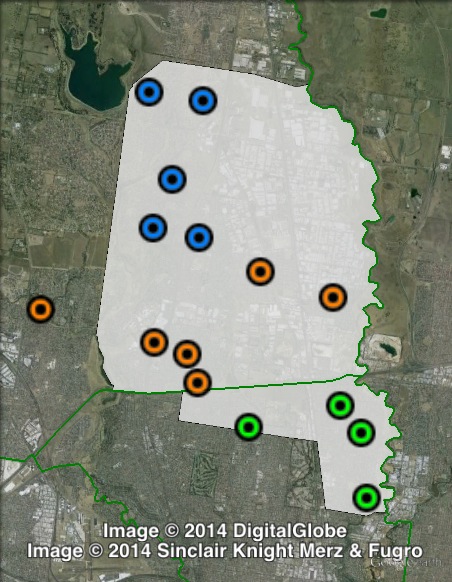
Booth breakdown
Booths in Broadmeadows have been divided into three areas: Central, North and South.
At the 2010 election, the ALP won a comfortable majority in all three areas, ranging from 68.8% in the south to 71.6% in the north.
At the 2011 election, the ALP’s primary vote ranged from 48.4% in the north to 54.94% in the south. The second-polling candidate, Celal Sahin, polled almost 30% in the north, and 24.8% in the centre, but only 9% in the south of the electorate.
2010 election breakdown
| Voter group | GRN % | ALP 2PP % | Total | % of votes |
| North | 6.36 | 71.55 | 9,771 | 30.19 |
| Central | 7.08 | 70.44 | 8,309 | 25.67 |
| South | 10.67 | 68.78 | 6,263 | 19.35 |
| Other votes | 8.39 | 67.68 | 8,022 | 24.79 |
2011 by-election breakdown
| Voter group | Sahin % | ALP % | Total | % of votes |
| North | 29.20 | 48.35 | 9,001 | 33.62 |
| Central | 24.83 | 50.56 | 7,413 | 27.69 |
| South | 9.06 | 54.94 | 3,986 | 14.89 |
| Other votes | 8.88 | 63.02 | 6,371 | 23.80 |
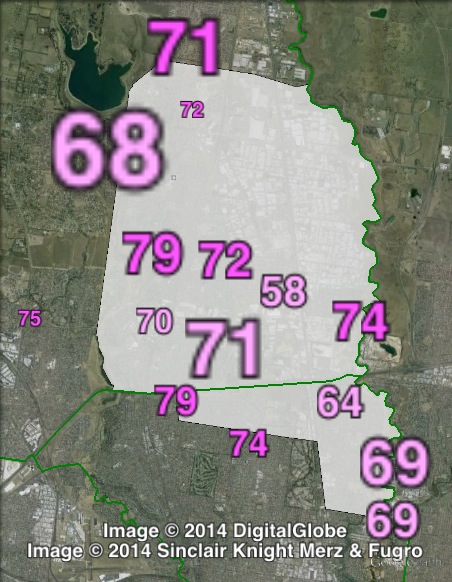
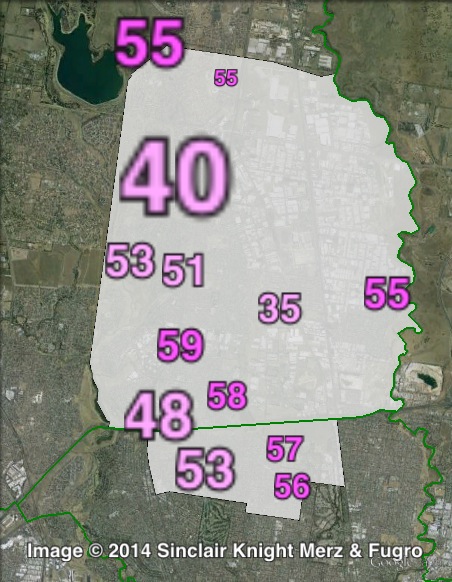
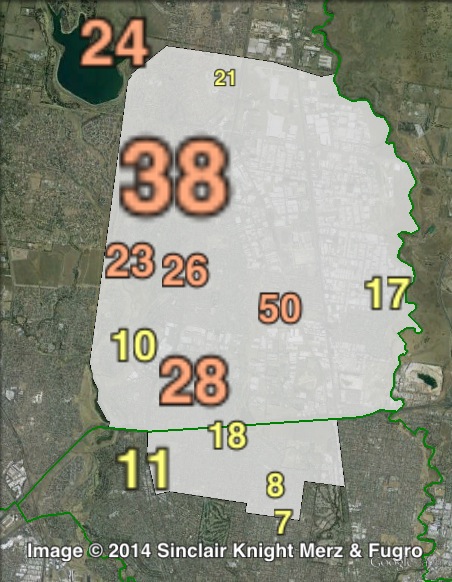


According to the ABC site, the ALP’s 2cp vote in the by-election is actually 69.9% (with Celal Sahin obviously coming second). Not sure where they get that from… the larger figure with the Greens supposedly coming second is from the VEC, who don’t seem to have re-checked it.
The Democrats and an independent (sitting MP Jack Culpin, who’d lost preselection) came second at two elections in the 80’s, and both of those get counted as ALP vs Lib margins. The 1993 by-election (no Lib candidate) had Labor on 67% and a bunch of independents far behind, and that didn’t even have preferences distributed. (Although I bet any votes which didn’t have all boxes numbered would’ve still been called informal, which is kinda perverse.)
I hadn’t been able to find the figures listed on the ABC’s website but I will probably update the table with those figures.
The main section of the VEC’s website just lists whatever 2CP count from the night, even if the figures changed, unless preferences needed to be distributed. Even in some cases where seatwide preferences are distributed it doesn’t mean the booth results were distributed in that way.
Didn’t VEC start counting in b/e with assumption Greens would be 2nd ? Presumably not having looked at social composition of seat – very Green
The Liberals have nominated a candidate, Mr Evren Onder.